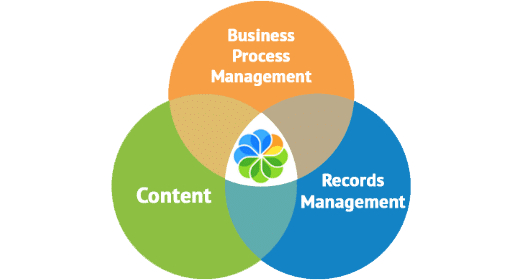Catch up with Alfresco on Records Management 2.4
Alfresco has been busy creating a powerful and scalable platform for records management with some huge implementations in the U.S. as well as delivering their latest update, Records Management 2.4.
With the IRMS conference coming up on May 15th, we thought it was a great time to catch up with Founding Engineer and Records Management Architect for Alfresco, Roy Wetherall, to find out the latest about Alfresco’s current products and what they will be working on in the coming updates.
Make sure to catch Roy Wetherall when he speaks at the Alfresco Meetup for Government, May 26th.
Hi Roy, Alfresco Has Just Released Records Management 2.4; What Can You Tell Us About The Developments In The Software?
The headline feature set for 2.4 is content classification. The primary driver for us is federal government — open source mandates and lower costs mean that we are a really good choice in that market.
For government, classified content is critical, particularly in the US market where we are looking to extend our DoD 5015.02 certification. This is primarily relevant for the US market, but it is a recognised standard and gives us a provable checkpoint to show we have a certain level of capability and credibility.
Alfresco records management 2.4 deals with classifying content, which includes records and non-records. This is a general architectural approach that we will be taking; that is to blend the records management and information governance features throughout the product, and not necessarily just bolting them to the side like other vendors tend to do.
You can classify content at various levels and assign corresponding security clearances to users. Information can be added about the classification lifecycle of the content; for example when it might be declassified or downgraded and why. The classification levels and clearances will be enforced inside the repository at a very low level so you can ensure when you are searching or accessing content through share, or any other integration point, that users will only see the information that they are cleared to see.
What Is Classification And Why Is It So Important For Government?
As you can imagine, in a federal or defence environment, classification is critical. If you consider documents that could contain information sensitive to national security or relate to decisions made by government officials, there are very good reasons why you want to control who has access to that content and when.
Content classification controls access to content using metadata marks in addition to ACL’s (access control lists). Metadata can be more dynamic and is centred around the object rather than the user.
Classification has uses outside of just defence and government. It is also relevant when considering content that contains PII (Personally Identifiable Information) or commercially sensitive information, for example. These features provide a way for organisations to mark content that is sensitive or highly valuable and control the dissemination of this content.

What Were The Key Drivers For This Release?
For us, government is one of the key verticals we operate in, but there are lots of applications for this outside of government as well. Traditionally, records management has not be used by enterprises simply because the features tend to be presented in a very complicated or very specific way, usually in the guise of a records management system.
One of our overriding objectives is to promote user adoption, particularly around governance and records management. The way we will present these features is simpler to use and much more accessible and we expect more organisations to be able to make use of these capabilities, where in the past they haven’t been able to.
What Are The Main Challenges That Records Management Faces?
Certainly I think user adoption; we’ve touched on it already, but it’s worth mentioning again because that is absolutely critical to the success of electronic records management.
In the past you would see the traditional vendors fall into two categories: one would be a custom-built records management system, which would be feature rich, but very focused on the RM world; and the other would be a traditional ECM vendor, that would bolt on some RM capabilities to tick feature boxes. In both scenarios they may well be very capable solutions, but they don’t tend to think about how the end user, or even the records manager, tends to work.
This can lead to very expensive deployments, for many thousands of people, that aren’t used effectively; and so ultimately, records aren’t captured. Then you are back in a situation where you’ve got uncontrolled content moving around your enterprise in whichever ways users find most convenient, rather than being caught in your electronic records management system.
We try to be completely user centric in our approach to this, thinking about what the end user needs to do and looking at problems that the records management team has. We are of the opinion that this is the best way to build value into the product, make it useful and therefore widely adopted.
What Are The Greatest Benefits You Perceive For Government Customers Or Other Customers Using This Alfresco Functionality And RM Capabilities?
The fundamental benefit from using Alfresco for RM is that you get a consolidated platform that has more than just records management. Here is a Venn diagram that explains it:

Records management – Content Management– Business Process Management – at the intersection is Alfresco.
The reality is if you are doing records management, you are inherently needing to deal with content, and then inherently dealing with business process, so Alfresco is the only platform where you get all three of these blended together.
The two things that stand out for us are first, that the way we deal with records is very transparent; we try and blend the experience across the users and the records managers working environment, which is primarily to drive user adoption.
Secondly, we back that up with the ability to automate using business rules. This means we can isolate the user from knowledge about an enterprise’s RM policy and help reduce the workload from the records management team.
Once an organisation’s RM policy has been decided, it can be maintained within the Alfresco implementation, so that users don’t need to do anything but their job, and the RM managers are left to do theirs. They don’t have to deal with all of the records arriving from around the enterprise individually; instead, they can concentrate on the exceptions, reviews and maintaining the policy, which is how they can add most value.
So You’re Presenting At The Alfresco Meetup For Government, What Is It You Will Be Talking About?
Firstly, that user adoption is key and some detail on how we work to ensure this is at the forefront of our minds.
I will share the direction we are taking now; including the latest RM 2.4 release and the roadmap for coming months, which includes: extending classification to include security marks; centralisation of security policy and declassification review; all leading to DoD 5015.2 classified record certification. Beyond that, I will touch on our long-term focus on supporting the needs of large scale records management deployments.
Related content
-

Key takeouts from Alfresco Day
Published on: 27 September, 2019 -

Alfresco DevCon 2019: Alfresco listening and moving forwards
Published on: 18 February, 2019 -

Alfresco DevCon 2019: A look at Alfresco’s products
Published on: 18 February, 2019 -

Alfresco DevCon 2019: Documenting the future
Published on: 18 February, 2019
